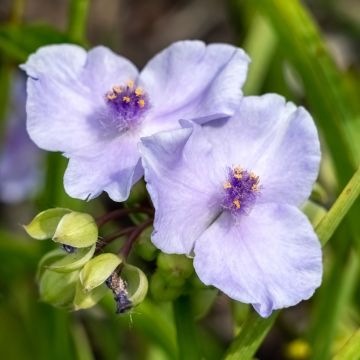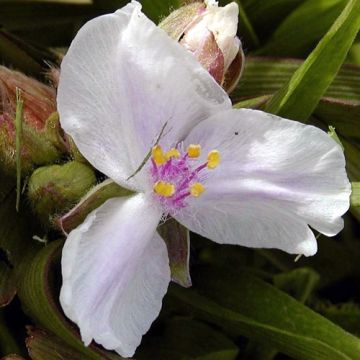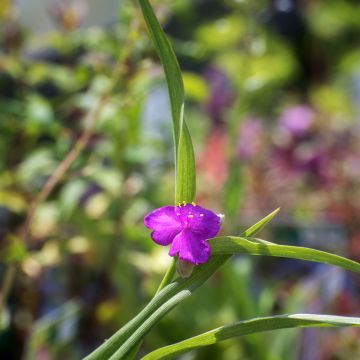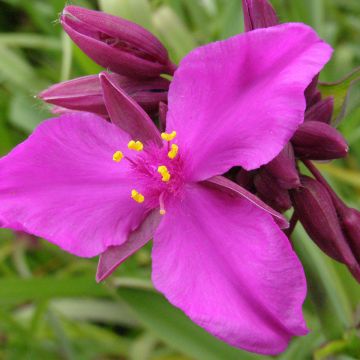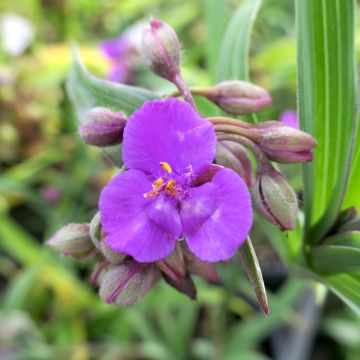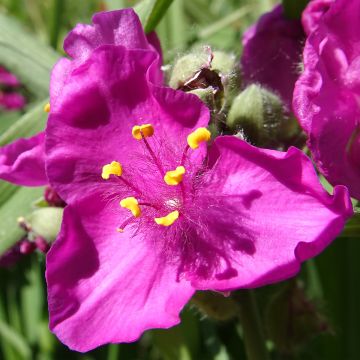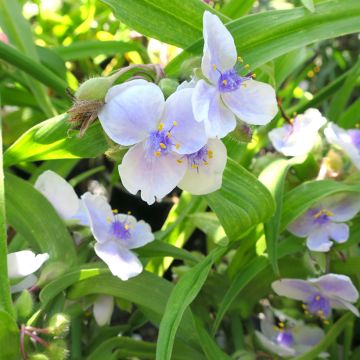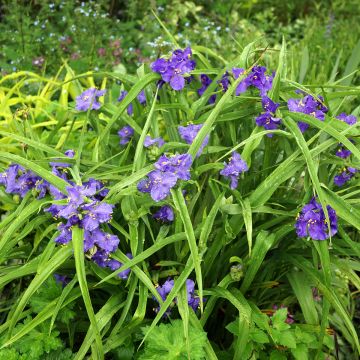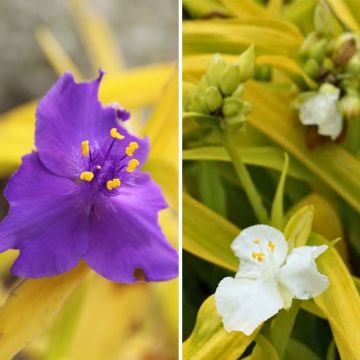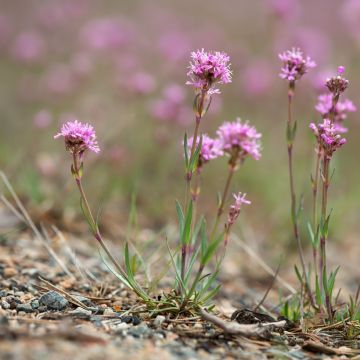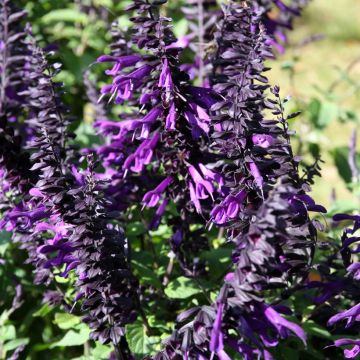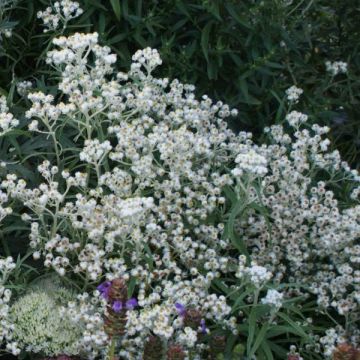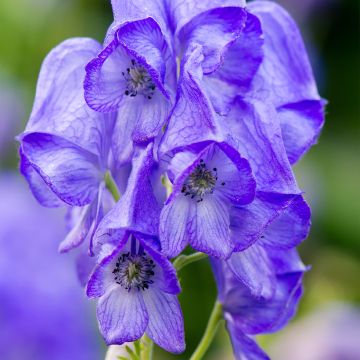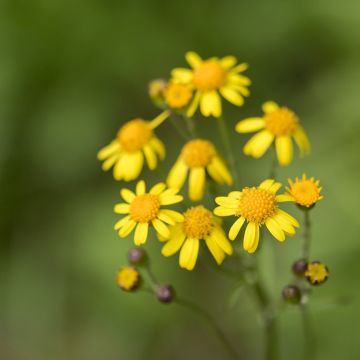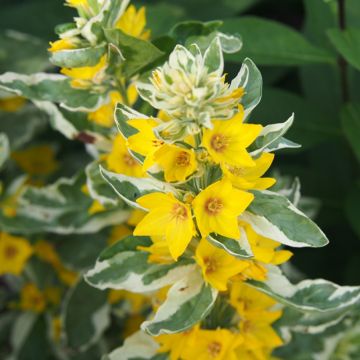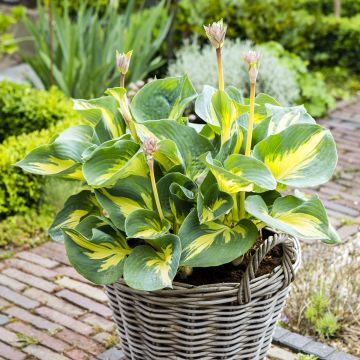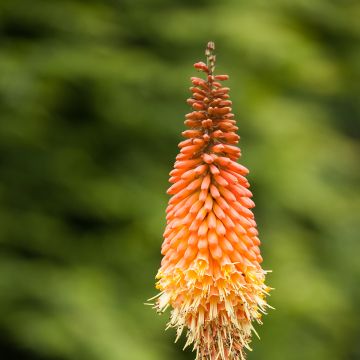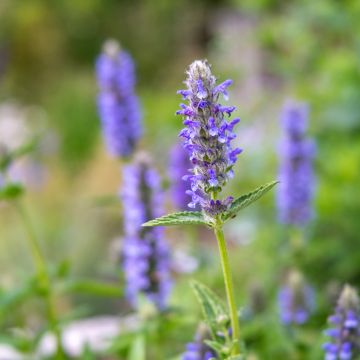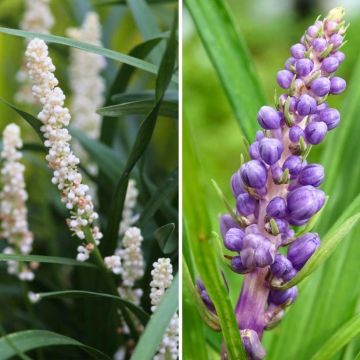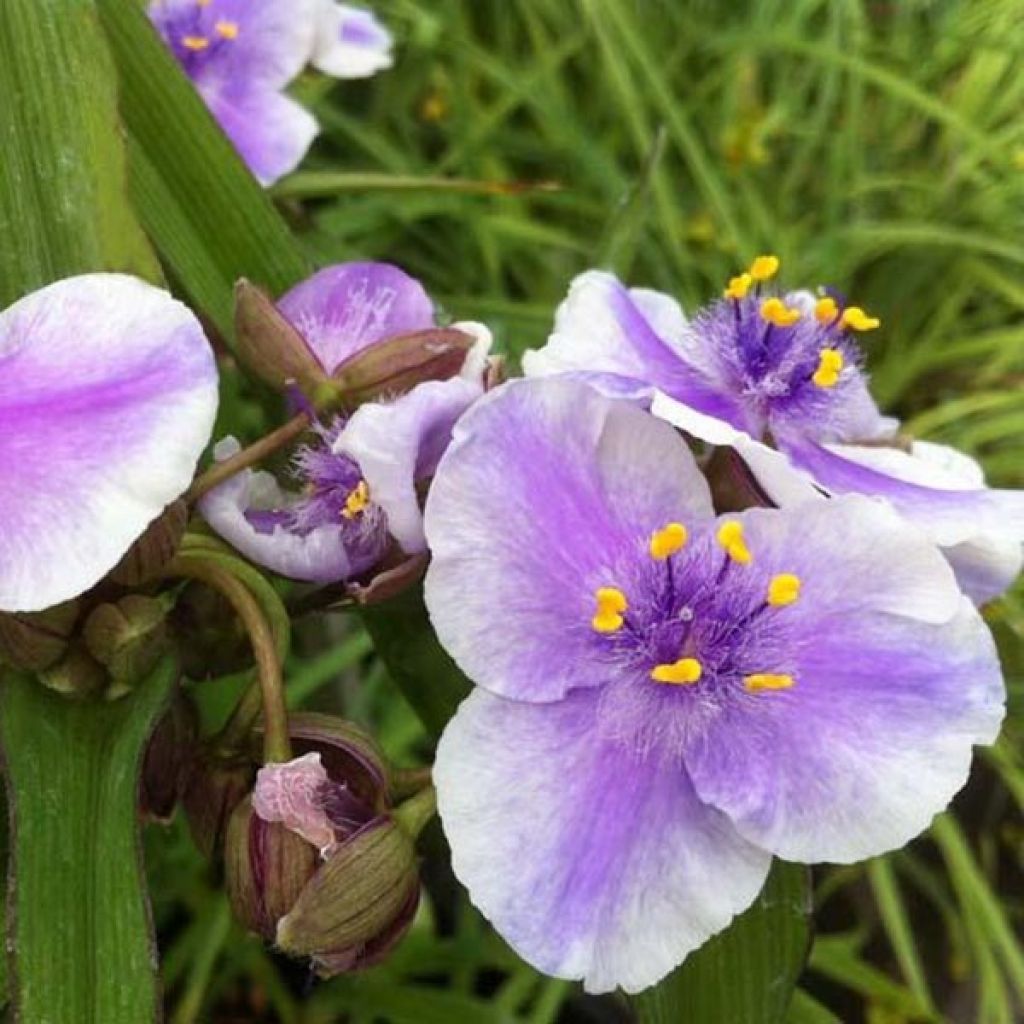

Tradescantia andersoniana Bilberry Ice - Spiderwort
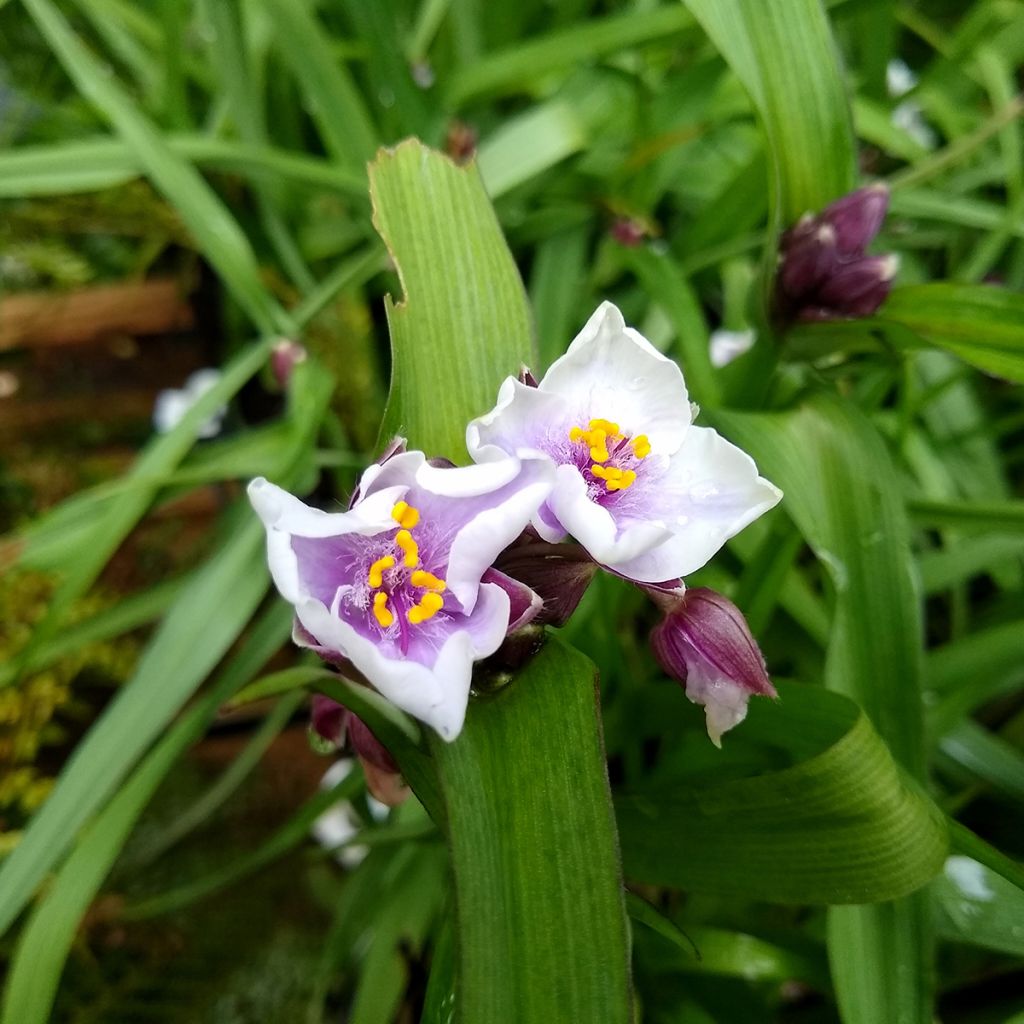

Tradescantia andersoniana Bilberry Ice - Spiderwort
Tradescantia andersoniana Bilberry Ice - Spiderwort
Tradescantia x andersoniana Bilberry Ice
Spiderwort, Spider lily
This item cannot be shipped to the selected country
Delivery charge from €5.90
More information
Schedule delivery date,
and select date in basket
This plant carries a 12 months recovery warranty
More information
We guarantee the quality of our plants for a full growing cycle, and will replace at our expense any plant that fails to recover under normal climatic and planting conditions.
From €5.90 for pickup delivery and €6.90 for home delivery
Express home delivery from €8.90.
Does this plant fit my garden?
Set up your Plantfit profile →
Description
Tradescantia x andersoniana 'Bilberry Ice' is a charming plant with large white flowers infused and speckled with mauve, subtly enhanced with yellow stamens. These watercolour flowers renew themselves above a tuft of narrow and pointed leaves for many weeks in summer. Hardy and easy to grow in wet soil, this perennial will bring a pastel and refined touch to the borders and semi-shaded edges of the garden, or as a border for a pond. It also grows well in pots.
'Bilberry Ice' is a horticultural hybrid of Tradescantia whose origins are in the Americas (Tradescantia ohiensis, T.subaspera, T virginiana). All these plants belong to the commelinaceae family. It is a herbaceous, deciduous perennial whose above-ground growth emerges in spring and disappears in winter. This forms a dense tuft about 45 cm (18in) high and spreads over 50 cm (20in). Its dark green glossy foliage is somewhat similar to that of grasses, composed of single, long and narrow, arched leaves, tapering to a point, sheathed on a tubular stem. The flowering begins in June and lasts all summer if the soil remains wet. It takes the form of flat flowers, composed of 3 wide petals, with contrasting yellow stamens, original in their simplicity, very pure but ephemeral. They open in pairs, carried in small bouquets or terminal cymes at the top of stiff floral stems. Each flower only 'lives' for a few hours, but they renew themselves continuously above the foliage.
Easy to grow and maintain, you can plant Tradescantia andersoniana 'Bilberry Ice' in humus-rich, moist to wet soil. This plant prefers this type of situation, and will fully express itself in a semi-shaded exposure to highlight its pastel colours. In full sun, regular and abundant watering will be essential. In moist rock gardens, at the foot of a shaded wall, in woodland areas, or even in borders, its flowers will brighten up all the small shaded areas. This perennial will thrive on the banks of streams or ponds, in the company of Carex, tiarelles, Persicaria, Primula bulleyana or Ophiopogon japonicus. It also grows well in pots, in semi-shade, with regular watering.
Report an error about the product description
Tradescantia andersoniana Bilberry Ice - Spiderwort in pictures
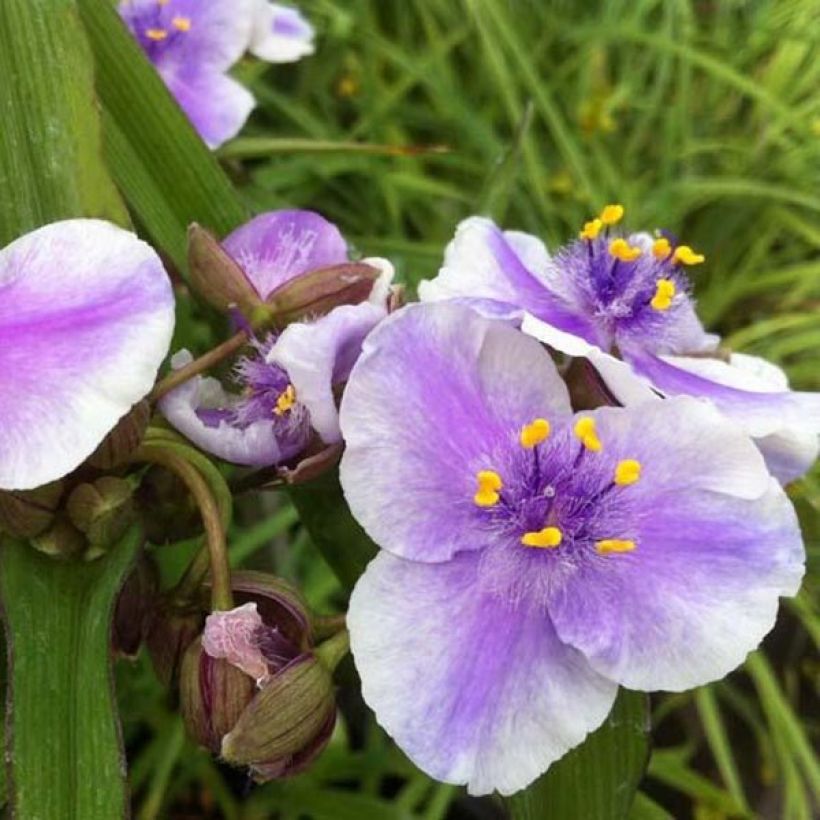

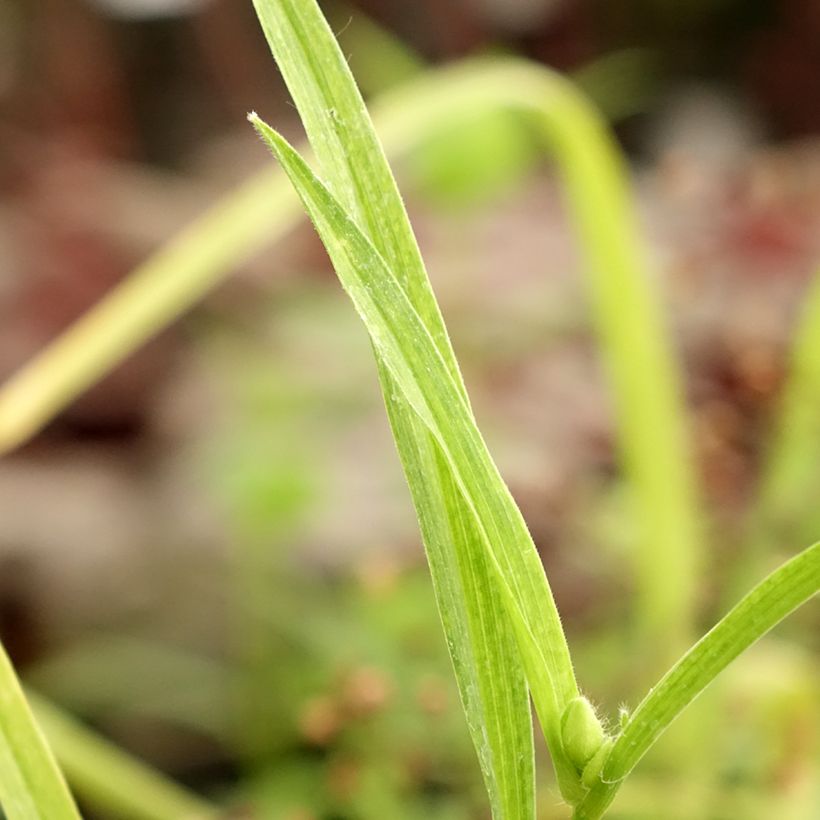

Flowering
Foliage
Plant habit
Botanical data
Tradescantia
x andersoniana
Bilberry Ice
Commelinaceae
Spiderwort, Spider lily
Cultivar or hybrid
Other Tradescantia - Spiderwort
Planting and care
Easy to grow and maintain, you can plant Tradescantia andersoniana 'Bilberry Ice' in humus-rich, moist to wet, slightly acidic, neutral, or slightly alkaline soil. This plant prefers a semi-shaded exposure. In full sun, regular watering will be necessary. To ensure continuous flowering until the frosts, it is necessary to cut off faded flowers. The foliage can be cut down to the ground in November. Young shoots are susceptible to damage from snails and caterpillars, so be sure to protect them. When the foliage starts to develop brown spots, it is preferable to replant as it is gradually degenerating. This plant does not tolerate the root competition of suckering or stoloniferous perennials.
Planting period
Intended location
Care
-
, onOrder confirmed
Reply from on Promesse de fleurs
Summer flowering perennials
Haven't found what you were looking for?
Hardiness is the lowest winter temperature a plant can endure without suffering serious damage or even dying. However, hardiness is affected by location (a sheltered area, such as a patio), protection (winter cover) and soil type (hardiness is improved by well-drained soil).

Photo Sharing Terms & Conditions
In order to encourage gardeners to interact and share their experiences, Promesse de fleurs offers various media enabling content to be uploaded onto its Site - in particular via the ‘Photo sharing’ module.
The User agrees to refrain from:
- Posting any content that is illegal, prejudicial, insulting, racist, inciteful to hatred, revisionist, contrary to public decency, that infringes on privacy or on the privacy rights of third parties, in particular the publicity rights of persons and goods, intellectual property rights, or the right to privacy.
- Submitting content on behalf of a third party;
- Impersonate the identity of a third party and/or publish any personal information about a third party;
In general, the User undertakes to refrain from any unethical behaviour.
All Content (in particular text, comments, files, images, photos, videos, creative works, etc.), which may be subject to property or intellectual property rights, image or other private rights, shall remain the property of the User, subject to the limited rights granted by the terms of the licence granted by Promesse de fleurs as stated below. Users are at liberty to publish or not to publish such Content on the Site, notably via the ‘Photo Sharing’ facility, and accept that this Content shall be made public and freely accessible, notably on the Internet.
Users further acknowledge, undertake to have ,and guarantee that they hold all necessary rights and permissions to publish such material on the Site, in particular with regard to the legislation in force pertaining to any privacy, property, intellectual property, image, or contractual rights, or rights of any other nature. By publishing such Content on the Site, Users acknowledge accepting full liability as publishers of the Content within the meaning of the law, and grant Promesse de fleurs, free of charge, an inclusive, worldwide licence for the said Content for the entire duration of its publication, including all reproduction, representation, up/downloading, displaying, performing, transmission, and storage rights.
Users also grant permission for their name to be linked to the Content and accept that this link may not always be made available.
By engaging in posting material, Users consent to their Content becoming automatically accessible on the Internet, in particular on other sites and/or blogs and/or web pages of the Promesse de fleurs site, including in particular social pages and the Promesse de fleurs catalogue.
Users may secure the removal of entrusted content free of charge by issuing a simple request via our contact form.
The flowering period indicated on our website applies to countries and regions located in USDA zone 8 (France, the United Kingdom, Ireland, the Netherlands, etc.)
It will vary according to where you live:
- In zones 9 to 10 (Italy, Spain, Greece, etc.), flowering will occur about 2 to 4 weeks earlier.
- In zones 6 to 7 (Germany, Poland, Slovenia, and lower mountainous regions), flowering will be delayed by 2 to 3 weeks.
- In zone 5 (Central Europe, Scandinavia), blooming will be delayed by 3 to 5 weeks.
In temperate climates, pruning of spring-flowering shrubs (forsythia, spireas, etc.) should be done just after flowering.
Pruning of summer-flowering shrubs (Indian Lilac, Perovskia, etc.) can be done in winter or spring.
In cold regions as well as with frost-sensitive plants, avoid pruning too early when severe frosts may still occur.
The planting period indicated on our website applies to countries and regions located in USDA zone 8 (France, United Kingdom, Ireland, Netherlands).
It will vary according to where you live:
- In Mediterranean zones (Marseille, Madrid, Milan, etc.), autumn and winter are the best planting periods.
- In continental zones (Strasbourg, Munich, Vienna, etc.), delay planting by 2 to 3 weeks in spring and bring it forward by 2 to 4 weeks in autumn.
- In mountainous regions (the Alps, Pyrenees, Carpathians, etc.), it is best to plant in late spring (May-June) or late summer (August-September).
The harvesting period indicated on our website applies to countries and regions in USDA zone 8 (France, England, Ireland, the Netherlands).
In colder areas (Scandinavia, Poland, Austria...) fruit and vegetable harvests are likely to be delayed by 3-4 weeks.
In warmer areas (Italy, Spain, Greece, etc.), harvesting will probably take place earlier, depending on weather conditions.
The sowing periods indicated on our website apply to countries and regions within USDA Zone 8 (France, UK, Ireland, Netherlands).
In colder areas (Scandinavia, Poland, Austria...), delay any outdoor sowing by 3-4 weeks, or sow under glass.
In warmer climes (Italy, Spain, Greece, etc.), bring outdoor sowing forward by a few weeks.

































